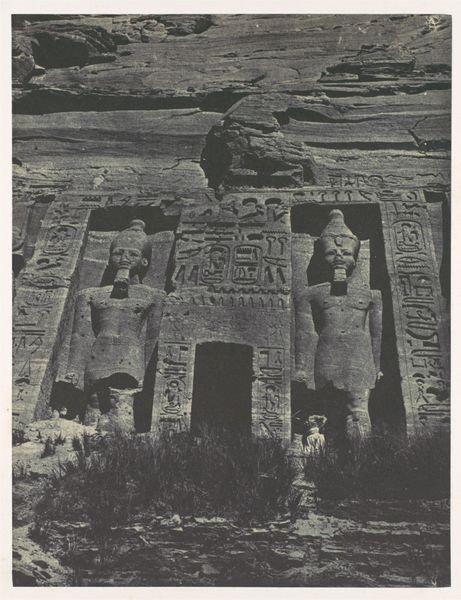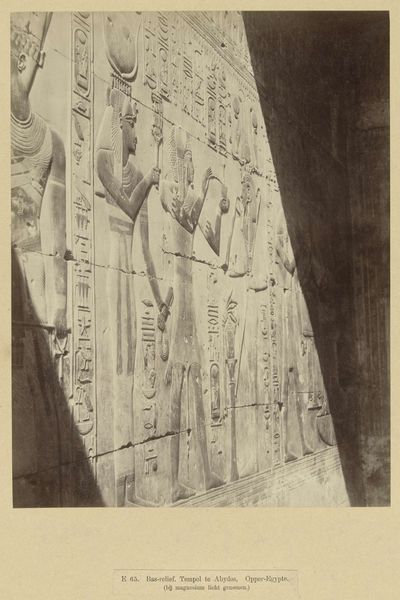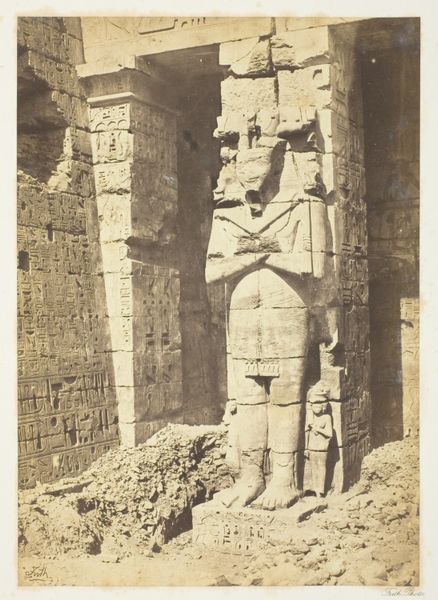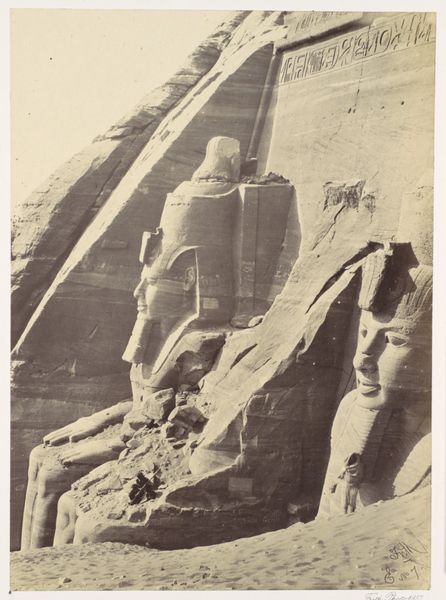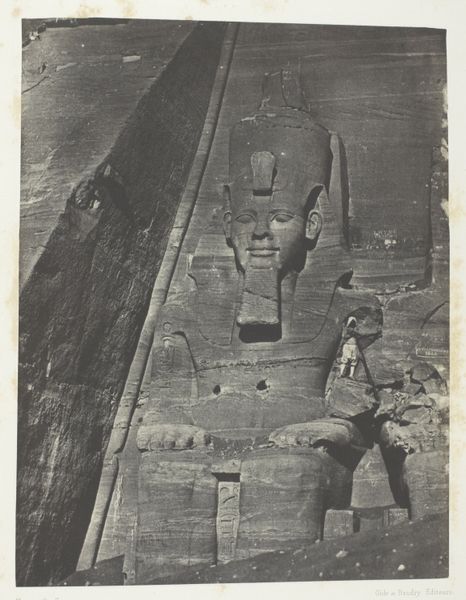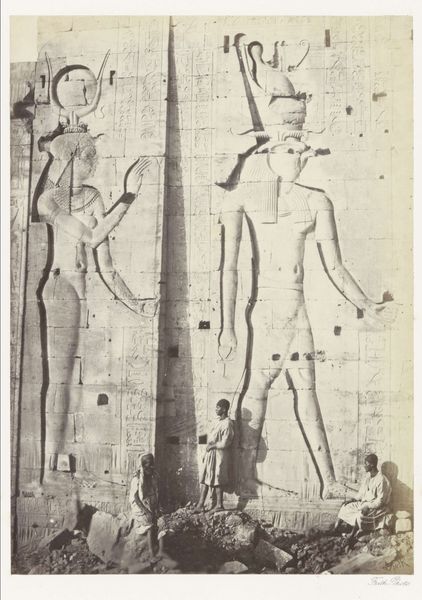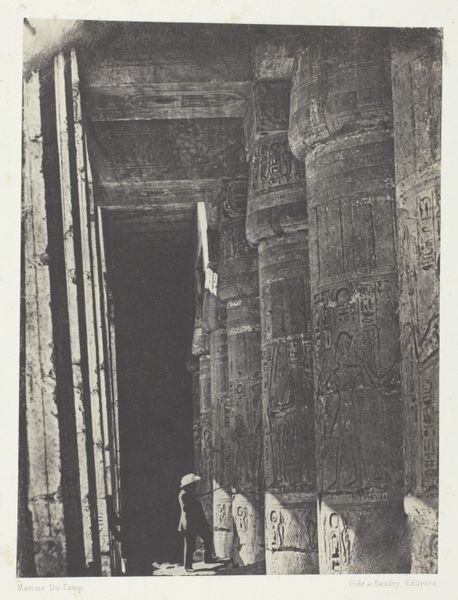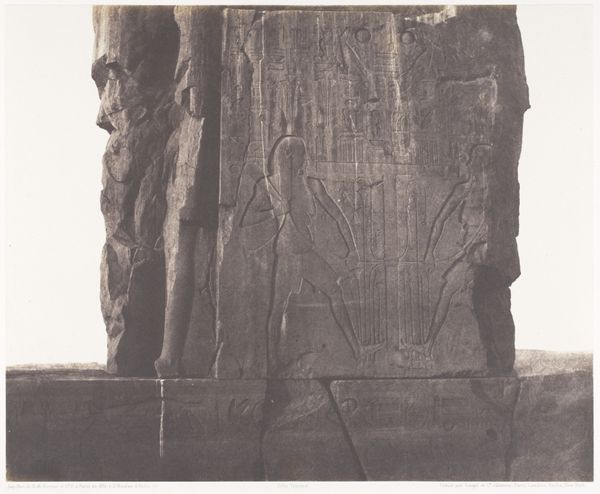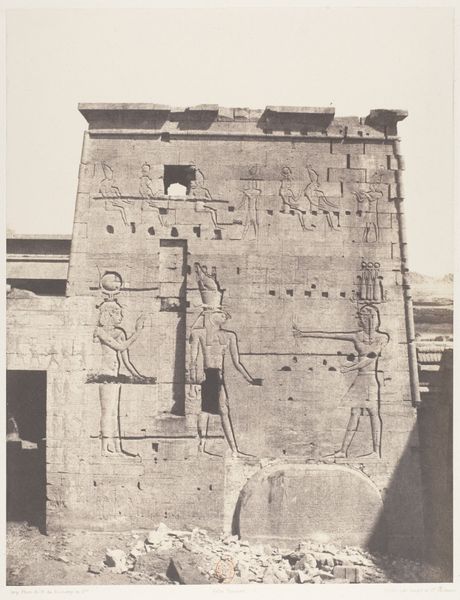
Ibsamboul, Colosse Occidental Du Spéos De Phrè; Nubie Possibly 1849 - 1852
0:00
0:00
print, photography, site-specific
#
16_19th-century
# print
#
war
#
landscape
#
ancient-egyptian-art
#
photography
#
egypt
#
ancient-mediterranean
#
site-specific
#
france
#
history-painting
Dimensions: 22.6 × 16.4 cm (image/paper); 43.1 × 29.9 cm (album page)
Copyright: Public Domain
This photograph of the collosal head of Ramses II at Abu Simbel was made by Maxime Du Camp in 1850, using the Calotype process. Du Camp was part of a literary and scientific mission to the Near East, but his photographs became important documents of early Egyptology. The inclusion of a human figure in the frame, which was a common practice at the time, gives us a sense of the monument's size, but it also speaks to the colonial context of the photograph. The statues at Abu Simbel served to convey the power of the Pharaoh, both to his contemporaries and to posterity. Du Camp’s photo comes at a time when European institutions sought to exert cultural dominance over foreign lands by appropriating artifacts. Photography played a key role in this project, with photos such as this becoming source material for scholarly interpretation and artistic re-imaginings. Analyzing Du Camp’s image alongside travelogues, archeological reports and other visual representations of Egypt from the period, will give a better understanding of the cultural and institutional forces at play.
Comments
No comments
Be the first to comment and join the conversation on the ultimate creative platform.


